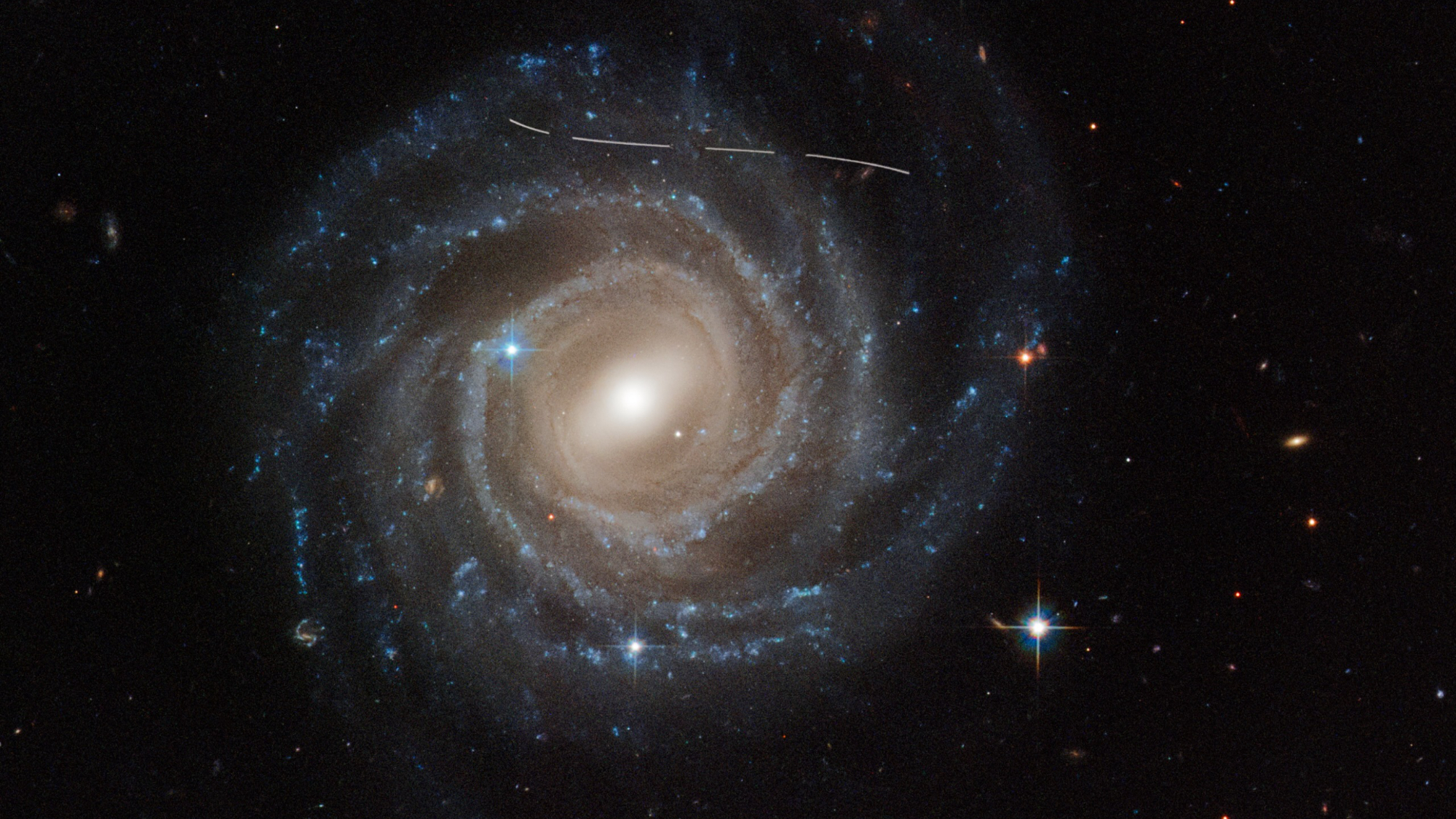
The dotted white streak cutting across this photo of a faraway galaxy might seem like a nuisance for astronomers, but it's actually the mark of a previously undiscovered asteroid.
The image, snapped by the Hubble Space Telescope from its decades-long perch in low Earth orbit, is one of many that have been photobombed by asteroids whizzing in front of the telescope's eyes. A large group of citizen scientists poring over such old Hubble photos has discovered more than 1,000 previously unknown space rocks that reside in the main asteroid belt between Mars and Jupiter, hundreds of them less than 0.6 miles (1 kilometer) wide, NASA announced on Thursday (April 18).
"We are getting deeper into seeing the smaller population of main belt asteroids," Pablo García Martín of the Autonomous University of Madrid in Spain said in a NASA statement.
"We were surprised with seeing such a large number of candidate objects," he added. "This is important for providing insights into the evolutionary models of our solar system."
Related: The best Hubble Space Telescope photos of all time
The newfound asteroids help refine the census of main belt asteroids, which is already estimated to be over a million. And some of the newly discovered objects are likely fragments of larger space rocks that broke apart due to collisions, researchers said.
The asteroid trails appear curved in Hubble photos because the telescope changes its point of view as it moves in Earth orbit. To find these trails, scientists stitched together multiple long-exposure shots, which explains the white dashed line. Spotting these telltale signs in deep-sky images is a tough task. Often, the pictures are cluttered with streaks by satellites, cosmic rays and other artifacts confusingly similar to asteroid trails.
"Asteroid positions change with time, and therefore you cannot find them just by entering coordinates, because at different times, they might not be there," Bruno Merín, of the European Space Astronomy Centre in Spain, said in the same statement. "As astronomers, we don't have time to go looking through all the asteroid images."
The researchers picked more than 37,000 Hubble photos spanning the past two decades and virtually cut them into four portions. Then, they turned to more than 10,000 volunteers from around the world to inspect the images and flag those with potential asteroid trails. Two million identifications later, the team found 1,701 asteroid trails, of which 1,031 were previously uncatalogued. The work also flagged 45 objects as potential comets.
The findings are described in a paper published last month in the journal Astronomy and Astrophysics.







